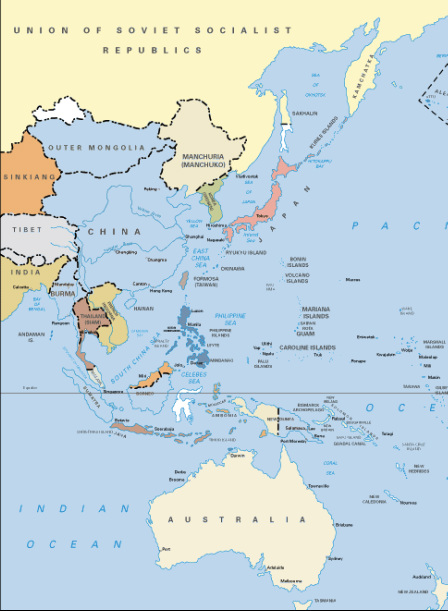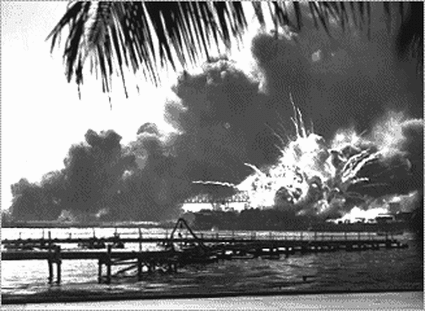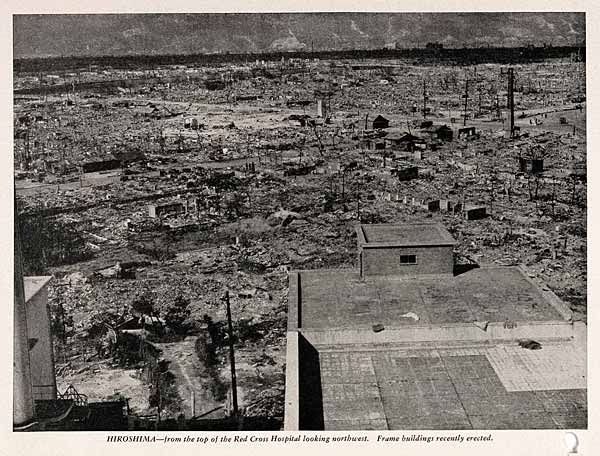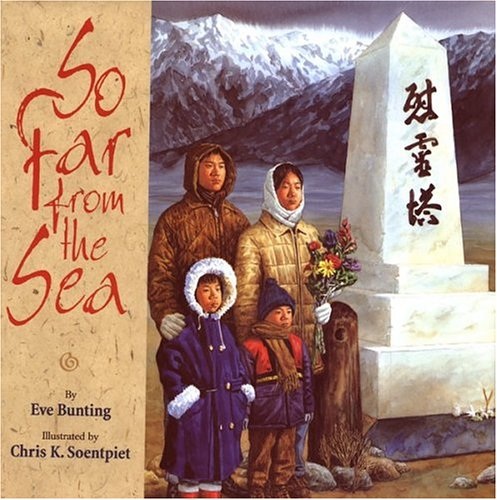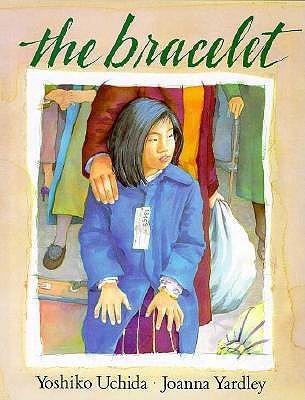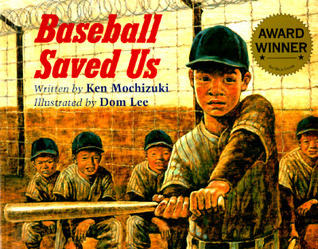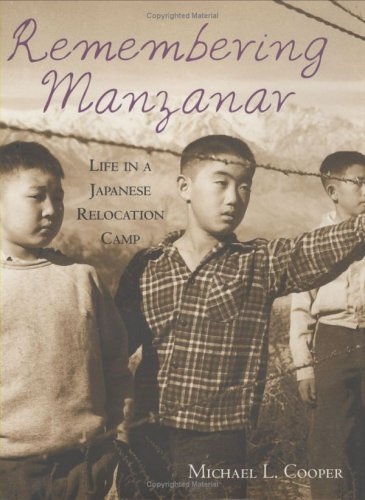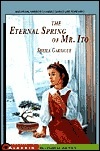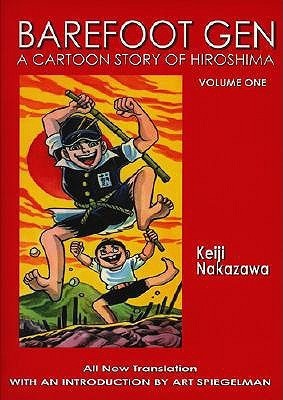|
Pacific and the Far East. September 20 2012. <http://www.westpoint.edu/history/SitePages/WWII%20Asian%20Pacific%20Theater.aspx>.
U.S.S. Shaw exploding during the Japanese raid on Pearl Harbor, December 7, 1941 23 September 2012. >http://www.archives.gov/exhibits/american_originals/fdr.html<.
Hiroshima - from the top of the Red Cross Hospital looking northwest. Frame buildings recently erected. 23. September 2012. >http://www.nationalarchives.gov.uk/education/heroesvillains/g5/cs3/g5cs3s2a.htm<
Japanese propaganda footage.
The Glorious Imperial Japanese Navy. Web. 12 September 2012. <http://www.youtube.com/watch?v=85geKurYzgw>. |
Timeline of Events
Late 1920s- Extreme nationalism begins to take hold in Japan. The emphasis is on a preservation of traditional Japanese values, and a rejection of "Western" influence. 1932- Japanese prime minister is assassinated by ultra-nationalist terrorists. The military holds increasing influence in the country. 1936- Japan signs an anti-communist agreement with Nazi Germany. It concludes a similar agreement with Italy in 1937. 1937- Japan goes to war with China. By the end of the year, Japan has captured Shanghai, Beijing and Nanjing. Japanese forces commit atrocities, including the "Rape of Nanjing", in which up to 300,000 Chinese civilians are said to have been killed. 1939 - Outbreak of World War II in Europe. With the fall of France to Nazi Germany in 1940 - Japan moves to occupy French Indo-China. 1941 - Japan launches a surprise attack on the US Pacific fleet at Pearl Harbor, Hawaii. Twelve ships are sunk, with a further 9 damaged; nearly 2,500 people are killed. The US and its main allies declare war on Japan the following day. 1942 - Japan occupies a succession of countries, including the Philippines, Dutch East Indies, Burma and Malaya. In June, US aircraft carriers defeat the Japanese at the Battle of Midway. The US begins a strategy of "'island-hopping", cutting the Japanese support lines as its forces advance. 1944 - US forces are near enough to Japan to start bombing raids on Japanese cities. Hiroshima and Nagasaki 1945 - US planes drop two atomic bombs, one on Hiroshima (6 August), the second on Nagasaki (9 August). Emperor Hirohito surrenders and relinquishes his divine status. Japan is placed under US military government. All Japanese military and naval forces are disbanded. 1947 - A new constitution comes into force. It establishes a parliamentary system, with all adults eligible to vote. Japan renounces war and pledges not to maintain land, sea or air forces for that purpose. The emperor is granted ceremonial status. 1951 - Japan signs peace treaty with the US and other nations. To this day, there is no peace treaty with Russia, as the legal successor to the Soviet Union. Independence 1952 - Japan regains its independence. The US retains several islands for military use, including Okinawa. 1955 - Liberal Democratic Party (LDP) formed. Apart from a brief interlude in the early 1990s - the party governs almost uninterruptedly for the rest of the century and beyond. 1956 - Japan joins United Nations. 1964 - Olympic Games held in Tokyo. |
Japan before World War II
From the early 16th to the mid 19th century, Japan had largely isolated itself from the outside world and only allowed a few Dutch trading companies access to selected ports in the country. This policy known as Sakoku ended in 1853 when Comodore Matthew C. Perry sailed into the bay of Tokyo with four gunships and demanded that the Japanese made a trade agreement with the US. This started a process known as the Meiji Restoration, which transformed Japan from a feudal society to a modern, industrialized state.
During this time the Emperor, or Tenno, became more relevant again, whereas before a Shogun, a military ruler, had effectively held power. The Tennos used this opportunity to increase their influence and to emphasize traditional Confucian and Shintoistic values of respect for authority and discipline. As a result of this, modern Japan became a very authoritarian state. The Tenno was also the head of Shintoism, the state religion, and by the time of the Second World War he was worshiped as a deity.
This also influenced the lives of Japanese children, who were taught to obey orders and respect authority. An imperial declaration issued in 1890 outlining these principles was often read out in Japanese schools until it was banned by the American forces in 1945.
In the First World War Japan fought on the side of the Allies, especially against German forces in China, but relations with the other Allies were always complicated, especially because Japan demanded greater influence in the region which the west was not willing to grant. The desire for greater influence mainly came down to the need to import raw materials such as minerals and oil in order to expand industrialization further. The military, which generally favored shows of strength and armed intervention, gained very much influence in Japan in many different areas, including education. In the 40s a general, Sadao Araki, minister for education and exerted a strong ideological influence on the school system.
In 1931 Japan invaded the Chinese region of Manchuria,which was rich in natural resources, and put a puppet regime into place, which was generally condemned by the West. In 1937 Japan started war with the rest of China. This war, called the second Sino-Japanese War, was marked by many atrocities, for example during the Rape of Nanjing when the Japanese Army killed thousands of civilians. Rape was widespread in the war, and many women were kidnapped and forced to work as “comfort women” for the Japanese army.
Interview with an eyewitness of the Rape of Nanjing who was 14 at the time.
In 1940 Japan signed a pact with Germany and Italy, though the European members of the Axis were not involved in the war in the Pacific, and Japan was not involved in the war in Europe. On December 8th 1941 Japan attacked the British colony Malaya, simultaneously the Japanese air force bombed the American pacific fleet in pearl harbor, which caused Britain and the US to declare war on Japan. From then on the events in the Pacific are considered part of the second World War.
|
|
A pre-war informational film for American schools about the life of Japanese children.
ERPI Classroom Films, Inc. Children of Japan. 1941. Web. 14 September 2012. <http://archive.org/details/Children1941>. |
Japanese Americans before World War II
In 1894 Japan and the US had signed a treaty that granted Japanese people the right to emigrate to the US and to enjoy the same rights as US citizens.
However this was never unproblematic; the Americans wanted to restrict the number of Japanese laborers that came to the US and the Japanese saw the racial segregation of schools in San Francisco as a violation of the treaty.
In 1913 the "Alien Land Act" was passed, which made it impossible for Japanese living in the US to own land for longer than three years.
Japan During World War II
Even though Japan was at war they did not draft women to the military.
The government did not feel it was respectful to the Japanese culture to draft women. The amount of women in the workforce from the year 1942-1944 was a very small number. The failure of the Japanese not recognizing the women as an integral part to the war ended up being a huge disadvantage to them.(Havens) Japan had another agenda on their list which was wanting to raise the birthrate during a time of national crises. Government incentives were offered as a way to encourage women to reproduce during this time. ( Havens)
The children were affected by the Evacuation plan which called for schools to be removed entirely.
"When the American bombing began in 1944, 10 million fled to the cities and the safety of the countryside.) "Of this number, two- thirds of the residents were of the largest cities and eighty- seven percent were children" (Havens 145, 154 161-3, 167 )
"The only people who were left behind were the workers, ammunition specialists and government officials" (Havens, 135-137)
The Supply of Food in Japan during World War II
The rationing of food for the Japanese was insufficient. " A government survey in Tokyo showed that in 1944 families depended on the black market for 9% of their rice, 38% of their fish, and 69% of their vegetables.(Havens, 125)
The Death toll in Japan in World War II
The loss of life in Japan in World War II was tremendous- the American aerial bombings of 65 Japanese cities took the lives of millions of Japanese people. "The Battle of Okinawa alone took the lives of 80,000-150,00 civilians" (Dower, 54-56)
Japanese Americans During World War II
After the bombing of Pearl Harbor, on December 7th 1941. President Roosevelt signed the Executive Order 9066. Which stated that the military had the right to declare certain "zones" as military property and that certain individuals may be excluded from these zones if the military saw fit. When the military declared these certain zones they were often located on the West Coast.
President Roosevelt felt that anyone of Japanese ancestry was a threat to "national security" and they were to be relocated into internment camps for the safety of the United States.
People who were relocated to these camps had 48 hours to vacate their homes, sell their businesses , houses and property. Since their was such a time constraint these people usually sold their possessions for practically nothing.
|
|
Interview with Toru Saito, who had been interned in one of the camps during World War II.
BBC. "Japanese Internment". The American Dream 2010. Web. 20 September 2012. <http://www.youtube.com/watch?v=M9DbYYOnd6k>. |
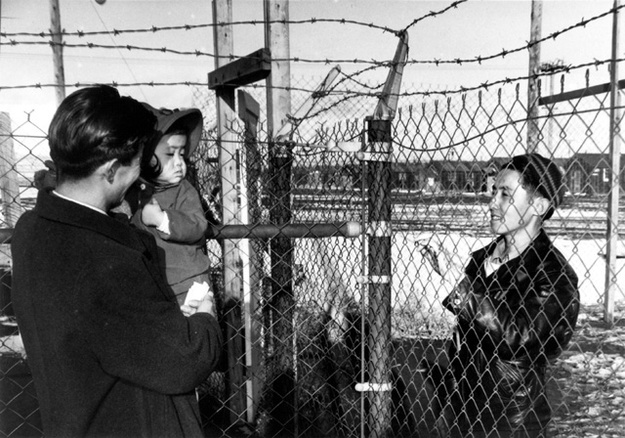
Smithsonian Museum of American History. "Boy behind barbed wire fence, Tule Lake". A More Perfect Union - Japanese Americans and the US Constitution. 26. October 2001. Web. 23 September 2012 <http://americanhistory.si.edu/perfectunion/collection/assets/000250.jpg>.
- In total, there were ten internment camps located on the West Coast: Manzanar, Tule, Topaz, Minidoka, Poston, Rowar, Jerome, Heart Mountain, Gila and Amache
- Many of the Internment camps were so overcrowded that twenty-five people were living in a space intended for four people.
- Upon arrival to these Internment camps, families were given a number and children were often separated from their families.
- The children very rarely had any designated areas for extracurricular activities. It wasn't until October 1942 when Ken Zenimura was sent to Gila River internment camp that a baseball field was constructed. Zenimura was an avid baseball lover and ended up building a field for the people of the camps to enjoy. The children's book Baseball Saved Us, tells his story.
- They consisted of several barracks that were 20x25 ft.
- The barracks were usually made up of scrap lumber, no insulation.
-Usually about 1 sq. mile that was enclosed by several barbed wire fences
- Had sentry towers with armed guards 24 hours a day
- Communal showers and mess halls - very little to next to nothing for privacy. The bathrooms didn't even have doors on them.
- The Internment camps were run very much like the concentration camps in Europe. They had a curfew, you weren't allowed to leave the premises without permission, many people died due to poor sanitation, trying to escape the camps and such close living quarters.( World War II)
- The children did have schools but were required to recite the pledge of allegiance every morning.
- A helpful link on information about the Internment Camps
http://www.pbs.org/childofcamp/
- Many of the Internment camps were so overcrowded that twenty-five people were living in a space intended for four people.
- Upon arrival to these Internment camps, families were given a number and children were often separated from their families.
- The children very rarely had any designated areas for extracurricular activities. It wasn't until October 1942 when Ken Zenimura was sent to Gila River internment camp that a baseball field was constructed. Zenimura was an avid baseball lover and ended up building a field for the people of the camps to enjoy. The children's book Baseball Saved Us, tells his story.
- They consisted of several barracks that were 20x25 ft.
- The barracks were usually made up of scrap lumber, no insulation.
-Usually about 1 sq. mile that was enclosed by several barbed wire fences
- Had sentry towers with armed guards 24 hours a day
- Communal showers and mess halls - very little to next to nothing for privacy. The bathrooms didn't even have doors on them.
- The Internment camps were run very much like the concentration camps in Europe. They had a curfew, you weren't allowed to leave the premises without permission, many people died due to poor sanitation, trying to escape the camps and such close living quarters.( World War II)
- The children did have schools but were required to recite the pledge of allegiance every morning.
- A helpful link on information about the Internment Camps
http://www.pbs.org/childofcamp/
Life in the Internment Camps for Children
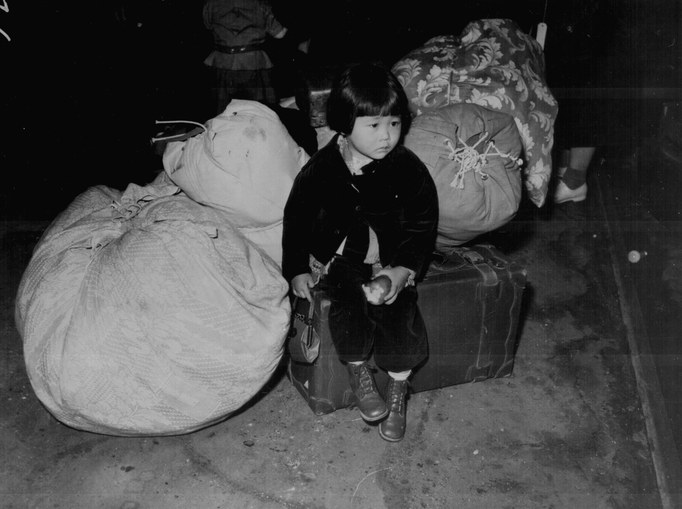
Albers, Clem "A young evacuee of Japanese ancestry waits with the family baggage before leaving by bus for an assembly center in the spring of 1942". National Archives. 8. November 2010. Web. 26 Sep.2012 http://www.archives.gov/research/military/ww2/photos/images/ww2-28.jpg
- Many children were separated from their families upon arriving to these internment camps.
- Children were required to go to school every day but often classrooms were overcrowded and were not provided with enough
materials.
- Children also had to report to role call every morning at 6:30
- There were very little areas for kids to play and most of the time they weren't allowed outside.
- Children were required to wear tags around their necks at all times. So as to identify which family that they belonged to.
The Aftermath of the War
In Japan:
After it's unconditional surrender in August 1945, Japan was occupied by allied troops. Much of the country was destroyed by the heavy bombing that had occurred towards the end of the war.
Food was scarce and rationed, which lead to widespread hunger and starvation. Many children had lost their parents either to hunger or in air raids.
The Allied Authorities imposed drastic ideology changes on Japanese schools, in an effort to affect the ideology in society as a whole. References to Japan's claim to dominance in the region, for example, were removed from schoolbooks.
For Japanese Americans
When the war ended millions of the Japanese Americans that were in the internment camps had no place to go. Due to President Roosevelt's issuance of The Executive Order 9066, millions of Japanese Americans were displaced from their homes. Most of them , if not all, had sold all of their property before they were relocated to one of the ten internment camps. Several internment camps didn't close until November 1945, following the end of the war because Japanese Americans had no place to live.
"Finally getting out of the camps was a great day. It felt so good to get out of the gates, and just know that you were going home…finally. Home wasn't where I left it though. Getting back, I was just shocked to see what had happened, our home being bought by a different family, different decorations in the windows; it was our house, but it wasn't anymore. It hurt not being able to return home, but moving into a new home helped me I believe. I think it helped me to bury the past a little, to, you know, move on from what had happened." ~ Aya Nakamura [November 18, 2000.] ( http://library.thinkquest.org/TQ0312008/lifeafter.html)
It wasn't until1948, when Congress agreed to pay some reparations to those that were wrongfully imprisoned in the internment camps during World War II.
The prisoners of the internment camps tried to put their lives back together as best they could given the circumstances. Several people returned to the Pacific Coast and tried to get back their land or acquire new property. However, many of them suffered and had difficulty findings jobs because of the lack of education.
Many Americans still saw the Japanese Americans as saboteurs and didn't treat them any differently once the war was over. One of the major changes after the internment camps in World War II was the Civil Liberties Act of 1988. The Civil Liberties Act stated "On August 10, 1988, the Civil Liberties Act of 1988 was signed into law by President Ronald Reagan. "The Act was passed by Congress to provide a Presidential apology and symbolic payment of $20,000 to the internees, evacuees, and persons of Japanese ancestry who lost liberty or property because of discriminatory action by the Federal government during World War II" (Department of Justice 1)." (Steven Wright on dartmouth.edu)
Current State of Affairs
In Japan:
The Japanese constitution of 1946 is generally considered to be pacifistic and states that: "the Japanese people forever renounce war as a sovereign right of the nation and the threat or use of force as means of settling international disputes". (Constitution of Japan quoted on geneva-academy.ch)
The Japanese army is therefore considered purely a force for self defense and has only once been deployed in a conflict region: From 2004 to 2006 Japanese soldiers assisted in humanitarian and infrastructure projects in Iraq. None of them fired a single shot and they all returned alive. Even this very limited engagement was highly controversial in the country.
The role of the Tenno has been reduced to a purely ceremonial one, with no real power at all, not even nominally as is common in other parliamentary monarchies.
Japanese schoolbooks deal with the war and the role Japanese imperialism played in it. Atrocities such as the Rape of Nanjing are addressed as well as the suffering inflicted on Japan in the later stages of the war. Nonetheless there are still conflicts with China and North and South Korea about the way the history of the events is dealt with and at present (September 2012) diplomatic relations between Japan, Taiwan and China are tense due to a conflict over claims to the Senkaku Islands.
For Japanese Americans:
Today Japanese American educators and researchers say that the community's third generation – the Sansei, most of them born after the war to parents who had been imprisoned – has inherited a complicated generational legacy that has played out in the Japanese American culture ever since the days of camp.
"A lot of what people experience in adulthood can be traced back to the trauma their parents passed on intergenerationally," said Satsuki Ina, 67, a psychotherapist and retired Sacramento State professor who was born to Nisei (or second) generation parents at the Tule Lake camp in California.
Research shows that Sansei whose parents were not imprisoned during the war – mainly because they didn't live on the West Coast – tend to have significantly stronger confidence in their rights as American citizens, compared with the children of former internees, according to University of Michigan psychology professor Donna K. Nagata.
Despite their grace in enduring the war years and their accomplishments afterward, despite the drive to achieve they instilled in their offspring, the Nisei (the second generation Japanese Americans) still handed down a profound unspoken insecurity about their place in American life.
"Something like camp happens, it sets your pathway in life," said Sato, 88, an Air Force veteran and registered nurse who has written about her family's incarceration at the Poston, Ariz., camp in her memoir, "Kiyo's Story."
"You're with it all the time. You never get over it. It's like being labeled as a kid. There's something always lingering that says you're not quite good enough. I still feel that."
Silence
The most striking generational theme for the Nisei is silence. Nearly three-fourths of the Sansei she studied reported that their parents mentioned internment camp only incidentally, if at all.
"For Sansei growing up, the absence of communication actually communicated a lot," she said. "They picked up a sense that this was negative and too painful to talk about."
Nisei parents not only wanted to put the past behind them; they also didn't want to burden their children with what they had experienced. But their silence came to resonate in unexpected ways.
Glossary of important terms
Sakoku: Period of Isolation from the early 16th to mid 19th century.
Bakumatsu: End of the Sakoku after the US exerted military pressure on Japan.
Meiji Restoration: Modernization in the second half of the 19th century.
Tenno: Japanese Emperor
Shogun: Military Ruler
Comfort Women: Euphemism for forced prostitution during World War II
Rape of Nanjing: Massacre in the Chinese city of Nanjing by Japanese troops in 1937
Nisei: Second generation Japanese Americans, many of whom were interned as children.
Sansei: Third generation Japanese Americans, many of whom were born after World War II
Bakumatsu: End of the Sakoku after the US exerted military pressure on Japan.
Meiji Restoration: Modernization in the second half of the 19th century.
Tenno: Japanese Emperor
Shogun: Military Ruler
Comfort Women: Euphemism for forced prostitution during World War II
Rape of Nanjing: Massacre in the Chinese city of Nanjing by Japanese troops in 1937
Nisei: Second generation Japanese Americans, many of whom were interned as children.
Sansei: Third generation Japanese Americans, many of whom were born after World War II
Bibliography of Relevant Children's Literature
|
All book covers from: goodreads.com
Trailer from: youtube.com |
1.) Bunting, Eve. So Far from the Sea. New York: Houghton, 1998, Print. 2.) Uchida, Yoshiko. The Bracelet. New York: Putnam, 1993. Print. 3.) Mochizuki, Ken. Baseball Saved Us: New York: Lee and Low Inc, 1993. Print. 4.) Cooper, L. Michael. Remembering Manzanar: Life in a Japanese Relocation Camp. New York: Houghton and Miffin Company, 2002. Print. 5.) Garrigue, Sheil. The Eternal Spring of Mr. Ito. New York: Simon, 1985. Print. 6.) Nakazawa, Keiji. Barefoot Gen. San Francisco: Last Gasp, 2004. Print. 7.) Takahata, Iaso. Grave of the Fireflies. Houston: Section 23 Films, 2012. DVD. |
Works Cited
1. Dower, John W. "Lessons from Iwo Jima". Perspectives 45.6 (2007): 54-56. Print.
2. Geneva Academy of International Humanitarian Law and Human Rights. "Japan - Profile". Rule of Law in Armed Conflicts Project. 2011. Web. 23 September 2012 <http://www.geneva-academy.ch/RULAC/state.php?id_state=116>.
3. Harper, Tim. "Japan's Gigantic Second World War Gamble". The Guardian. 6. September 2009. Web. 22 September 2012 <http://www.guardian.co.uk/world/2009/sep/07/japan-imperialism-militarism>.
4. Havens, Thomas R.H. Valley of Darkness: The Japanese People and World War Two. Lanham MD: University Press of America, 1978. Print.
5. History on the net group "World War Two - Japanese Internment Camps in the USA". historyonthenet.com. 2000. Web. 22 September 2012 <http://www.historyonthenet.com/WW2/japan_internment_camps.htm>.
6. Satsuki, Ina. "Children of the Camps, the documentary." pbs.org. 1999. Web. 22 September 2012. <http://www.pbs.org/childofcamp/documentary/index.html>.
7. Shin, Gi-Wook, and Daniel C. Sneider. History Textbooks and the War in Asia, Divided Memories. New York: Routledge, 2011. Print.
8. US Department of State, Office of the Historian. "Japanese-American Relations at the Turn of the Century, 1900–1922". Milestones. Web. 24. September 2012 <http://history.state.gov/milestones/1899-1913/JapaneseRelations>.
9. Wright, Steven "The Civil Liberties Act of 1988", dartmouth.edu. 201051. Web. 22 September 2012 <http://www.dartmouth.edu/~hist32/History/S06%20-%20Civil%20Liberties%20Act%20of%201988.htm>.
